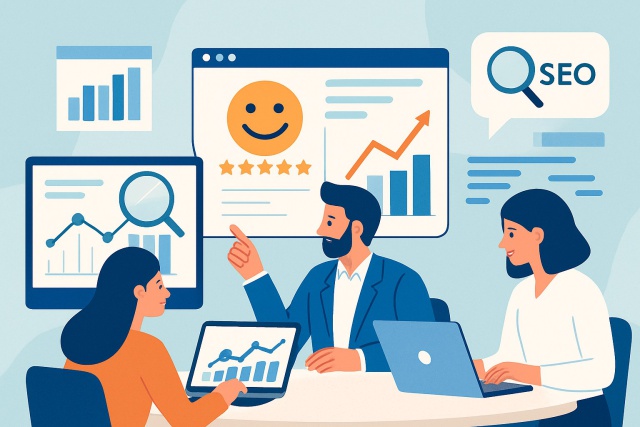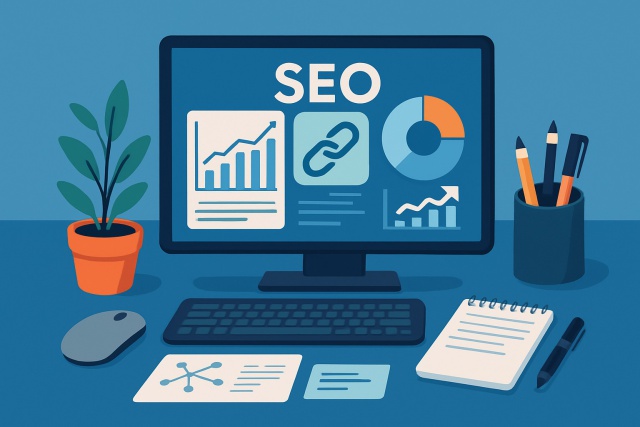
How to get more seo clients with proven outreach methods
Discover actionable outreach strategies designed to help you attract more SEO clients. Follow this p...

Bounce rate reveals the percentage of visitors who exit your landing page without doing anything else. Learning how to reduce bounce rate is key because it often signals stronger user engagement and content that hits the mark. It also improves your chances of converting visitors into customers.
These issues obviously have a real impact on how visitors perceive and interact with your landing page. Slow loading times tend to get under users’ skin, making them restless and much more likely to click away. When the content misses the mark or the design feels cluttered, visitors can easily get lost.

Visual representation of bounce rate reduction techniques on a landing page
Start by taking a good look at your current bounce rate using tools like Google Analytics. This helps you pinpoint which landing pages send visitors packing and gives you a clearer picture of how people behave on your site.
Speed things up by optimizing images, leveraging browser caching and trimming down your code. Faster loading times can make all the difference between a visitor sticking around or clicking away.
Make sure your site plays nicely on mobile devices by using responsive design and checking how your pages perform across different screen sizes because everyone’s on their phone these days.
Align your page content with what users are hunting for by syncing your messages, offers and visuals with their search queries or where they came from. It’s a bit like reading the room before you start talking.
Keep your design and navigation straightforward with a clean layout that guides visitors to the key info without any head-scratching moments.
Use bold headlines and eye-catching visuals that grab attention fast while clearly spelling out the benefits. No one’s got time for vague fluff.
Place clear, effective calls to action featuring direct action-driven language in spots where users are likely to engage—think of these as gentle nudges rather than pushy sales pitches.
Cut down distractions by limiting pop-ups and interruptions that break the visitor’s flow and might send them running for the hills.
Keep testing and tweaking by running A/B tests on different elements, diving into heatmaps and gathering user feedback. It’s all about fine-tuning your pages to keep getting better.
Data analysis sets the stage for targeted improvements that hit the mark. Tweaking technical bits like page speed and mobile friendliness stops visitors before frustration sends them packing. When your content lines up with what visitors are looking for and your design is smooth and intuitive, you’re more likely to keep them engaged. Toss in clear calls to action and cut down on distractions to nudge users toward meaningful interaction.
Keeping a low bounce rate is more of a marathon than a sprint—it takes consistent effort rather than a quick fix. To effectively reduce bounce rate, I’ve found it pays off to make a habit out of checking your analytics regularly, so you can spot any sudden changes in visitor behavior before they snowball into bigger issues. Gathering user feedback through surveys or usability tests gives you that much-needed glimpse into what visitors genuinely want, not just what you think they need. Keep refreshing your landing page content and design, drawing from the data and user preferences like a chef tweaking their recipe for that perfect flavor. And don’t let mobile and speed optimizations slide, since technology and devices evolve fast—what worked yesterday might be clunky today. Embrace a steady, iterative process and lean on SEO tools like Moz or Mangools to keep your content humming along with the latest search trends and audience demands.
The best way to lower bounce rate appears to be staying laser-focused on what your visitors truly want, delivering it clearly, swiftly, and without any distractions. In my experience, a steady, iterative approach to optimization usually works wonders
12 articles published
With over a decade of experience in data-driven marketing, Quentin Moreau is known for his analytical approach and innovative use of metrics to optimize online campaigns for maximum impact.
Read Pages
Discover actionable outreach strategies designed to help you attract more SEO clients. Follow this p...

Master online reputation SEO tactics to actively control your brand’s online image with practical st...

Confused by SEM, SEO, and SEA? This clear guide breaks down each concept, showing how they work toge...

Explore whether contextual link building services are a smart investment for your SEO strategy with...